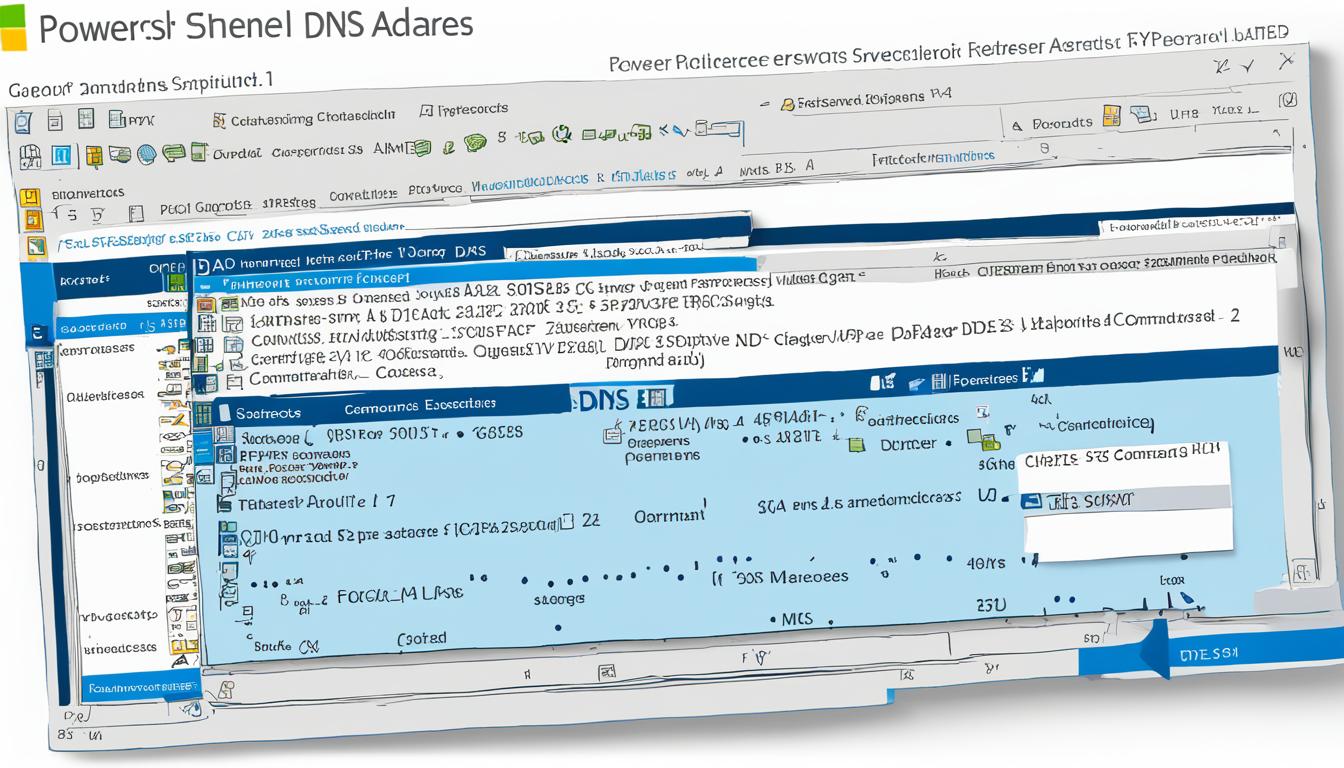Knowledge Base – Web Hosting Help & Support
Did you know that a staggering 92% of website owners encounter hosting issues at some point? Whether it’s setting up a domain, troubleshooting website errors, or managing server tasks, web hosting can be a complex endeavor. That’s where a knowledge base comes in. It’s a valuable resource packed with web hosting tutorials, troubleshooting tips, and hosting FAQs to help users resolve their hosting problems effectively and efficiently.
Key Takeaways:
- A knowledge base is a valuable resource for web hosting help and support.
- It provides web hosting tutorials, troubleshooting tips, and hosting FAQs.
- Users can learn how to set up their domain, manage their server, and troubleshoot common website issues.
- A knowledge base enhances customer support and empowers users to find solutions to their hosting problems.
- By utilizing the knowledge base, users can access customer support resources and resolve their issues more efficiently.
Benefits of a Knowledge Base for Web Hosting Support
Utilizing knowledge base software for web hosting support offers several benefits. Firstly, it enables lightning-fast customer support by providing tailored and immediate answers to customer queries. With an AI search feature, users can receive relevant and precise responses without the need to scroll through lengthy articles.
- Effortless Self-Service: A knowledge base empowers customers with self-service capabilities, allowing them to solve problems at their own pace.
- Decreases Case Handling Time: Customers can find answers to their queries independently, reducing the workload on support teams and decreasing the total case handling time.
- Quick Reference Tool: The knowledge base also benefits support teams by providing a quick reference tool to look up answers to customers’ questions.
| Benefits of a Knowledge Base for Web Hosting Support |
|---|
| Enables lightning-fast customer support |
| Effortless self-service for customers |
| Reduces case handling time for support teams |
| Provides a quick reference tool for support teams |
Overall, a knowledge base streamlines the support process, improves customer satisfaction, and enhances the efficiency of support teams.
Creating a Knowledge Base for Web Hosting Support
To create a knowledge base for web hosting support, I follow a series of key steps. First and foremost, the selection of a suitable platform or knowledge base software is crucial for hosting and managing the content effectively. This platform will serve as the foundation for all the information that will be provided to users seeking support.
Once the platform is chosen, the next step is to define the purpose and scope of the knowledge base. This involves identifying the main topics and categories that will be covered to ensure comprehensive coverage of web hosting support. By determining the purpose and scope, I can ensure that the knowledge base caters to the specific needs of the target audience.
Gathering relevant information is fundamental to the success of the knowledge base. This includes collecting and including existing documentation, FAQs, and other resources that provide valuable insights into web hosting support. By incorporating this information, I ensure that the knowledge base is a comprehensive and reliable source of support for users.
Organizing the content logically is essential for facilitating easy navigation and user-friendly experience. I create categories and subcategories that align with the main topics and provide a clear structure for users to explore. This organization ensures that users can easily find the information they are looking for, improving the overall usability of the knowledge base.
When writing and formatting the articles, I adopt a friendly and conversational tone. This approach helps users feel comfortable and engaged while navigating the knowledge base. I provide step-by-step instructions and utilize visual elements like images or videos to enhance the understanding of complex concepts.
Prior to launching the knowledge base, it is crucial to test it with a small group of users. This enables me to gather feedback and make any necessary improvements, ensuring that the knowledge base meets the needs and expectations of its users. Testing and iteration are important steps in the development process to enhance the overall effectiveness of the knowledge base.
Once launched, the knowledge base requires ongoing maintenance and updates to keep it accurate, relevant, and helpful to users. Regular content review and updates are necessary to ensure that the information provided remains up-to-date and aligned with the evolving needs of users.
Sample Table: Knowledge Base Platform Comparison
| Platform | Key Features | Price |
|---|---|---|
| Platform A | Easy-to-use interface Powerful search functionality Customization options |
$X/month |
| Platform B | Intuitive knowledge base editor Analytics and reporting Integration with CRM |
$Y/month |
| Platform C | Multiple language support Responsive design SEO optimization |
$Z/month |
Knowledge Base for Employees and Customer Self-Service
A knowledge base serves a dual purpose, providing valuable resources for both internal employees and customers seeking self-service options. For employees, the knowledge base stores key topics and information that are relevant to their roles within the company. It acts as a centralized repository for essential company policies, procedures, and guidelines. Employees can easily access this information organized into categories such as HR, IT, and product information.
In addition, employees are encouraged to contribute their knowledge and provide feedback to keep the knowledge base up-to-date and relevant. This collective effort ensures that the knowledge base remains a valuable resource for all employees.
On the other hand, a customer service knowledge base is designed to empower customers with self-service capabilities. It provides a wealth of information to address common questions and troubleshoot issues independently. The customer service knowledge base includes frequently asked questions, troubleshooting tips, product usage guides, and other relevant information.
With a customer service knowledge base available 24/7, customers can find the support they need even when live agents are not immediately available. This empowers customers and enhances their overall experience by providing quick access to solutions.

By leveraging a knowledge base for both employees and customers, companies can effectively provide the necessary information and support to all stakeholders. The knowledge base becomes a central hub of resources, facilitating efficient workflows and enabling employees and customers to find the information they need easily and independently.
Managing and Optimizing a Knowledge Base
As the website evolves and new information becomes available, proper knowledge base management is essential to keep it accurate and relevant. Regular content review and updates ensure that users can rely on the knowledge base for the most up-to-date information. Outdated articles should be removed, while new ones addressing emerging topics should be added. This ongoing review and update process help maintain the credibility and usefulness of the knowledge base.
Navigation and search functionality play a crucial role in optimizing the user experience. A well-structured and intuitive navigation system allows users to easily find the information they need. Implementing an efficient search functionality helps users quickly locate specific articles or topics. By prioritizing user-friendly navigation and search, you can enhance the accessibility and usability of your knowledge base.
When it comes to article content, it’s important to keep it concise and straightforward. Users appreciate clarity and simplicity, so aim to provide easy-to-understand instructions and explanations. Avoid jargon or technical terms that might confuse users. Using visual elements like images or videos can further enhance understanding and engagement.
One of the key aspects of managing a knowledge base is to encourage user feedback and continuously improve based on it. By actively seeking user input and listening to their suggestions, you can identify areas of improvement and address specific pain points. Valuing user feedback and incorporating it into updates and enhancements ensures that the knowledge base aligns with the needs and expectations of your target audience.

| Benefits of Managing and Optimizing a Knowledge Base | Actions |
|---|---|
| Accurate and relevant information | Regular content review and updates |
| Improved user experience | Optimized navigation and search functionality |
| Enhanced clarity and simplicity | Concise and straightforward articles |
| Better user engagement | Visual elements like images or videos |
| User-centric knowledge base | User feedback and continuous improvement |
Cost Considerations of a Knowledge Base
When implementing and maintaining a knowledge base, it’s important to consider the associated costs. These costs can vary depending on several factors, starting with the platform selection. Whether you choose a free or paid solution, this decision can impact the overall cost of your knowledge base. Additionally, customization options, such as design and integrations, may require an additional investment.
Ongoing maintenance is another cost consideration. Regular content updates and ensuring accuracy are crucial for a successful knowledge base, and these tasks can incur costs in terms of resources and time.
The hosting and infrastructure needs of your knowledge base can also contribute to the overall cost. Factors such as servers and cloud-based solutions must be considered when evaluating the budget for your knowledge base. Furthermore, integration with other systems or platforms, like CRM systems or chatbots, may require additional investment.
It’s also important to note that certain platforms may have licensing fees for specific features or functionality. As such, it’s crucial to evaluate the cost of a knowledge base based on the specific needs and requirements of your organization.
FAQ
What is a knowledge base?
What can I learn from web hosting tutorials?
How can a knowledge base help with website troubleshooting?
What information does a hosting knowledge base provide?
What are the benefits of using a knowledge base for web hosting support?
How do I create a knowledge base for web hosting support?
Can a knowledge base be used for internal employees?
How does a customer service knowledge base benefit customers?
How should a knowledge base be managed and optimized?
How much does a knowledge base cost?
- How Strategic SEO Drove Growth for a CPAP E-commerce Brand - July 24, 2025
- Top 3 SEO Companies in Toronto: An Analytical Comparison - July 23, 2025
- SEO for Entry Door Services - April 24, 2025





















Post Comment
You must be logged in to post a comment.